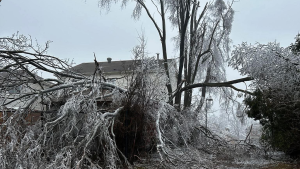Ontario does not have an administrative organization in place for its new construction dispute adjudication system less than five months before the system is due to take effect.
But that’s not yet a serious cause for concern, panellists heading up sessions at the Osgoode Professional Development conference held in Toronto April 29 said in interviews.
The new adjudication system, coupled with a new prompt payment regime, will be launched Oct. 1 as part of the second phase of reforms of the old Construction Lien Act; lien modernization provisions took effect in the new Construction Act on July 1, 2018.
Disputes will be heard by a roster of adjudicators coordinated by a new Authorized Nominating Authority (ANA).
Proposals to run the ANA were submitted in April. Brian Gray, spokesperson for the Ministry of the Attorney General, said in an emailed statement the government will unveil the new ANA “in the coming weeks” and that Attorney General Caroline Mulroney continues to target Oct. 1 for implementation of the prompt payment and adjudication processes.
Construction lawyer Bruce Reynolds, whose recommendations for lien act reform developed with co-counsel Sharon Vogel formed the basis for much of the new Construction Act, said it will take awhile for a significant caseload to come onstream.
“I believe there is sufficient time for the government to consider those proposals, to award the right to form the ANA to one of those proponents and for one of those proponents to have the ANA up and running by Oct. 1,” said Reynolds, who participated in the Osgoode education day as a facilitator and panellist. He noted he was not active in setting up the ANA.
“Somewhat more challenging may be conducting training courses and the certification of adjudicators such that we have certified adjudicators who are capable and qualified to run an adjudication should someone deliver notice of adjudication in early October,” added Reynolds, who is with Singleton Urquhart Reynolds Vogel LLP.
But that was unlikely to be a major issue, he explained, given that “the number of cases in the early going, in October, November and December, should be very low. In addition, as a fallback, the legislation provides that the attorney general has the jurisdiction to appoint adjudicators herself.”
The concept of proportionality is critically important to the efficiency of the adjudication process
— Bruce Reynolds
Singleton Urquhart Reynolds Vogel LLP
Adjudicators will be drawn from across the construction sector with lawyers, architects, engineers, chartered surveyors and contractors among those targeted for appointment. Jason Annibale of McMillan LLP, a panellist on one session with fellow construction lawyer Geza Banfai, also of McMillan, said in an interview there are concerns that the ANA has not yet been appointed but that the process looks sensible.
“We have very good people, the most senior members of the construction bar and indeed the construction industry that are turning their attention to developing the ANA that makes sense, that will appoint adjudicators,” said Annibale.
“We have heard that they will have ethical obligations. We know there is judicial review available when natural justice as it is understood in the context of adjudication is infringed.
“I think we are in good hands in terms of developing an organization that will develop adjudicators and establish the requisite guidelines.”
Adjudicators will be required to make a decision within 30 days of receiving documents from the parties in dispute, a deadline that can be extended in complex cases if the parties agree. Annibale told the Osgoode seminar audience that adjudicators will have extensive powers including an inquisitorial function to bring disputes to a quick resolution, and explained later that sometimes the longer hearings go, the less natural justice is served.
“The point is, people talk about rough justice and we will probably see a bit of that but that is not to say the system now is so perfect,” he said, referring to hearings with lawyers making “16 or 17 arguments” that showcase their creativity but do not necessarily render better justice.
“Might there be some things that are missed? I think, yes, there will be. Is it better to lose early than win late? I think the answer is, yes, sometimes you can have a prolonged discussion and win in the end but your legal costs have exceeded the amount you have been awarded or are disproportionate.”
Reynolds said it’s important for the adjudicator to have significant control over the process to ensure “proportionality,” with the depth of the adjudication matching the complexity of cases and dollar amounts involved.
“The concept of proportionality is critically important to the efficiency of the adjudication process because a significant number of disputes are capable of being resolved on documents alone,” he said.
The grounds for judicial appeal of adjudicated decisions are few, Banfai noted. He predicted that over time more parties would find a way to resolve their disputes rather than going to adjudication or, following that, judicial review.
“Good luck,” said Banfai of parties hoping courts will grant leave to review adjudicated decisions. “Don’t get your hopes up for judicial review. Courts have to give leave, so they must have at least one argument that falls within a narrow set of circumstances.”
Reynolds said the first couple of years could be “bumpy.”
Banfai said he was optimistic the courts would take a pragmatic view of the process and create guidelines “in keeping with the policy objects of this legislation.”











Recent Comments
comments for this post are closed